
Domestic power for seasonal logging camps is traditionally supplied by a generator, banging along all day. So when Volts Energies were asked if they could provide a silent, worry-free alternative, they rose to the challenge by designing a solar energy trailer which could meet the camp’s power requirement.
Volts Energies have been providing private energy solutions to residential and commercial clients across the American continent since 2003.
They came up with a ‘mobile’ solution because camps change location. After it’s bumpy road journey, the panels, which lie flat against the roof and one side during transport can be deployed in under twenty minutes on their bespoke aluminium framing which allows them to be tilted toward the sun in the familiar way – seen here outside their factory during construction. 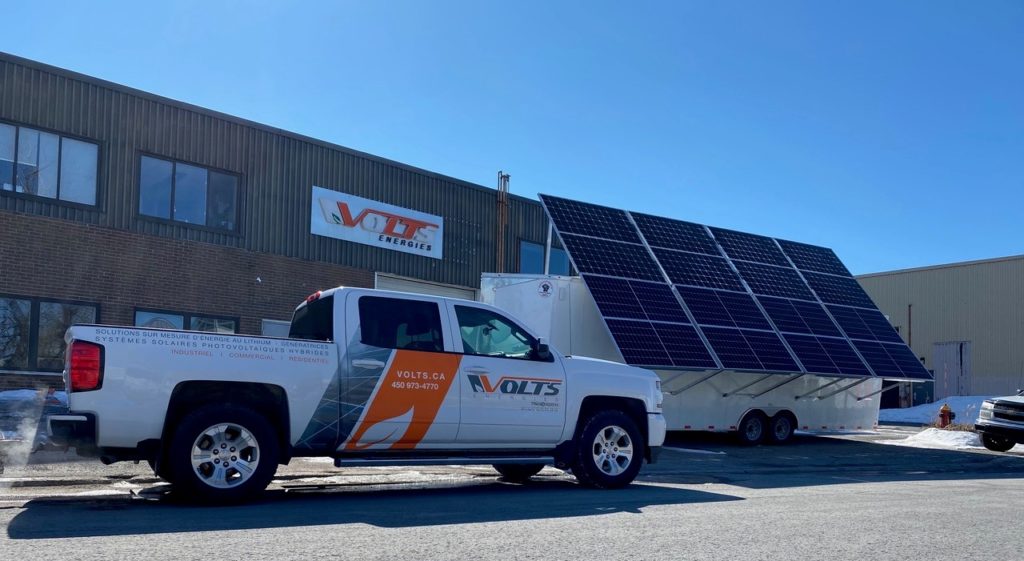
Bifacial panels
The 16 panels housed on the trailer offer 6kWp in normal circumstances – but that output can be augmented by the fact that the eight panels on the roof section are ‘bifacial’ …able to absorb energy which has been reflected from the white trailer roof onto the back face of the panel. This neat ability allows the Photovoltaic installation to provide over 7kWp.
Volts Energies have chosen to harvest the Solar power with a pair of SmartSolar MPPT 150/100’s for the roof section; and a pair of SmartSolar MPPT 150/70’s for the wall.
Energy is stored in three 24VDC battery banks of 1012Ah each, bringing the total energy reserve to 72kWh. The AGM batteries have a combined weight approaching two tons – so it was decided to install them above the trailer’s double axles, to support the load. They occupy an insulated wooden structure which secures them from any inadvertent metallic contact across the battery poles, whilst also having ventilation holes to dissipate heat during heavy use.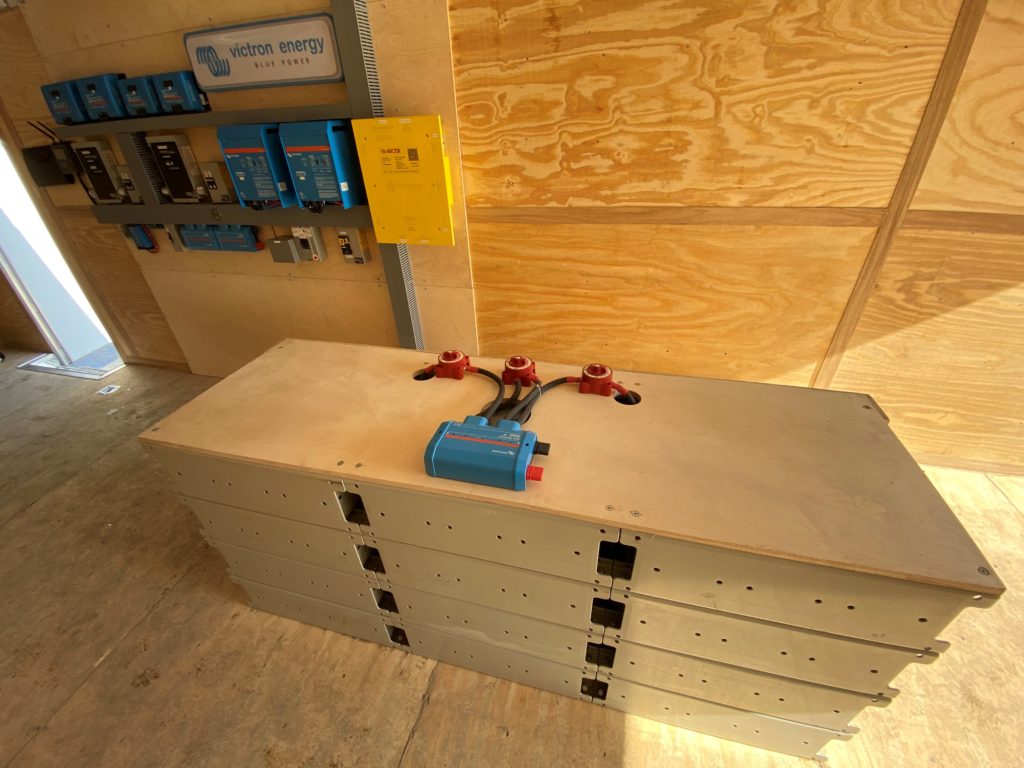
All component parts of the installation were fitted directly onto a plywood sheet for ease of working, and later installed into the trailer as a complete module.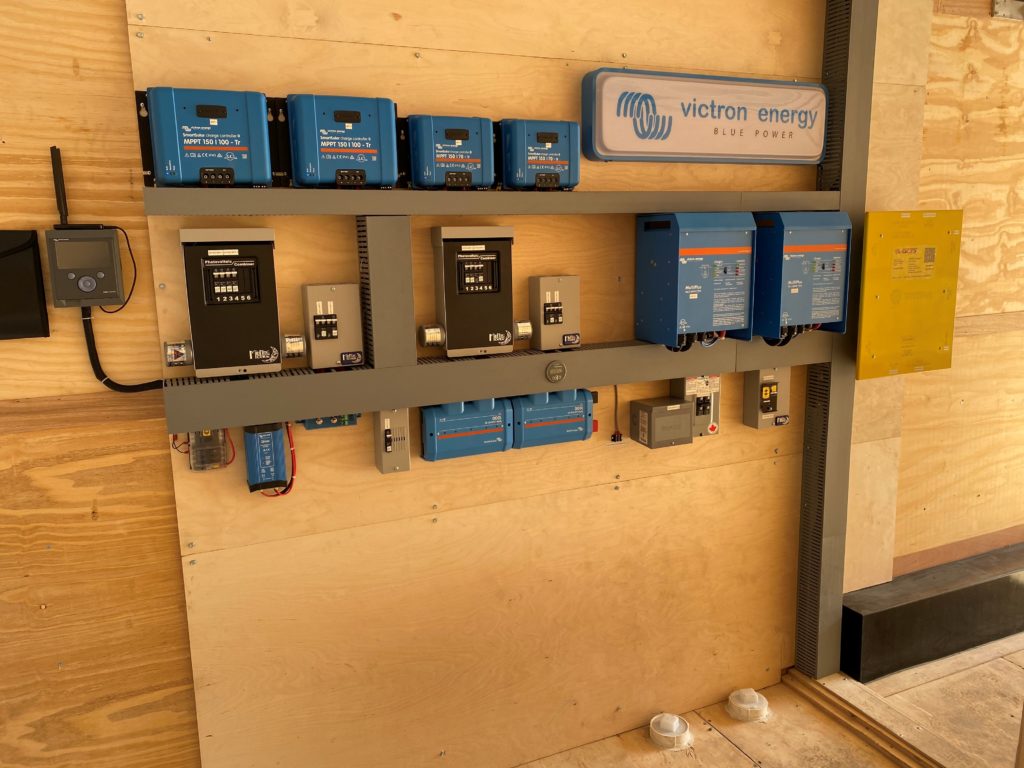
That module includes an Orion DC-DC 24V to 12V converter which was installed to power the trailer’s 12V lights using the 24V battery bank; a pair of Lynx Power In modular DC bus bars; and the installation’s AC output which is provided by a pair of MultiPlus 24VDC 3kW 120V Inverters/Chargers. These MultiPlus units can provide a peak power of 12kW – perfect for the power surge when the site’s air conditioning system starts up.
Internet monitoring for remote systems
Remote monitoring of the system is provided by the Color Control GX control panel – the communications module which sits at the heart of the system controlling the entire installation, and which is connected to the internet by satellite. This allows Volts Energies to monitor system performance remotely; receive alerts in the event of a problem – change settings if necessary – and monitor the batteries’ state-of-charge.
Speaking of state of charge – the unit responsible for keeping track of the batteries’ performance is a BMV-712 battery monitor. The BMV-712 keeps account of all the power going into …and coming out of the battery bank – together with a plethora of other current and voltage -related information which it logs for inspection. It also has an alarm and automatic relay which can be programmed to trigger actions in the event of low/high-voltage; low/high temperature; low state of charge etc. All of this information is available from the display on the BMV itself; via Bluetooth on a smart phone or other device; or from anywhere in the world using VRM – Victron Energy’s free-to-use Remote Management platform.
At the logging camp a relay has been set to start a 13kW generator. If the solar resource is insufficient, or energy demand is high and prolonged, the generator starts – and stops – automatically according to battery voltage. This start-up can also be triggered remotely, using VRM.
All electrical protections are of course present. At the AC outlet of the inverters, long extensions have been provided to route the current to the three construction trailers which the system supplies. When traveling, these extensions are disconnected, rolled up and stored in the trailer. Everything has been designed to facilitate the installation and removal of equipment quickly and safely for future users.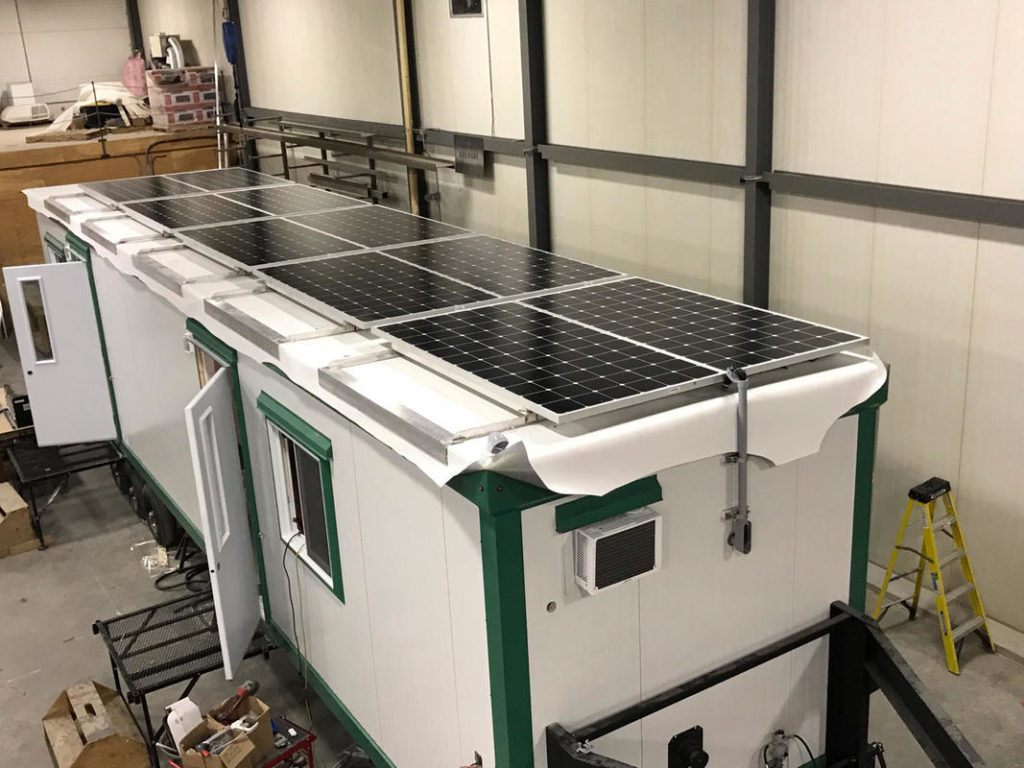
This trailer was ordered by the client after he successfully ran his logging camp all summer using a similar but smaller trailer – built by Volts Energies – without using his generator at all, resulting in huge fuel savings. This second trailer is an endorsement of Volts Energies planning and design to meet their clients demands for remote energy.
Trailer power
In a country the size of Canada customers can’t always come to you. Volts Energies have fitted out another trailer which they take to potential customers to demonstrate remote power. Seen in the image below, they’ve promised to show us how that trailer is fitted out in a couple of weeks.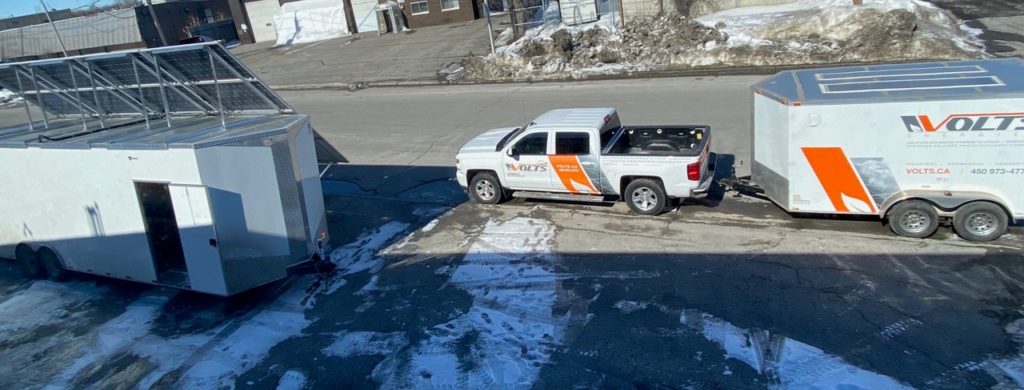








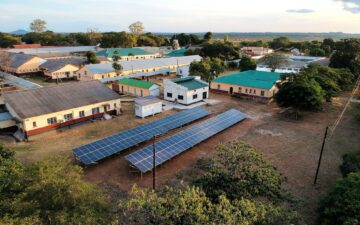









 #victronenergy #adventure
#victronenergy #adventure
 ELECTRICS
ELECTRICS 
